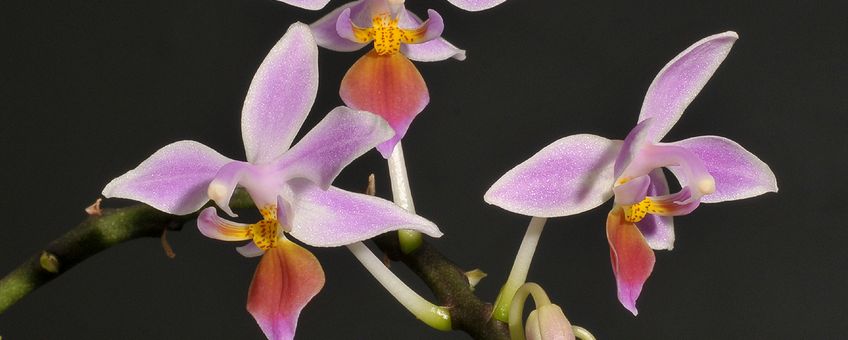
New insights in evolution of butterfly orchid flowers
Naturalis Biodiversity CenterThe flower of a butterfly orchid has three sepals and three petals. The median petal is enlarged and often ornamented with a callus. This structure provides a holdfast to visiting insects. The flower contains more specialized organs. A column is formed by a fused anther and stigma. Projections on both sides of the column, the stelidia, position specific body parts of a visiting insect right in front of the anther or stigma. An outgrowth of the base of the column and median petal, the mentum, acts as a hinge. It slams an insect walking on the median petal against the anther and stigma. During a brief but close contact moment, pollen is transferred from flower to insect or the other way around, ensuring pollination.

Pollinators
During the evolution of butterfly orchids, the shape and size of the callus, stelidia and mentum adapted to pollinators of different sizes. This resulted in many different flower shapes. Various MADS-box and MYB-transcription factors determine the formation of floral organs. In the research, electron microscopy, micro-3D-CT-scanning and gene expression analysis were applied to increase our understanding of floral development. Tissue of early floral buds and mature flowers was analyzed of two different species of butterfly orchids: Phalaenopsis equestris and Phalaenopsis pulcherrima. The first species has flowers with a large callus, short stelidia and a median petal lacking a mentum. The second species has flowers with a small callus, long stelidia and a pronounced mentum. The pollinators of both species also differ: P. equestris is pollinated by large bees from the genus Xylocopa, P. pulcherrima by smaller bees from the genus Amegilla.

Transcription factors determine floral shape
The results of the research show that the stelidia develop early in young floral buds, whereas the callus and mentum are formed much later. A combination of micro-3D-CT- and gene expression analyses reveals that stelidia are former stamens. The callus is a petal fused with a stamen, whereas the mentum is made up of sepal-, petal- and stamen tissue. With high expression of the SEP-1 gene but low expression of most other genes, butterfly orchid flowers develop a large callus. In the opposite situation, the callus remains small. In butterfly orchid flowers with a pronounced mentum and long stelidia, expression of AP3-1 and AGL6-1 genes is high, whereas most other genes are less expressed or not at all. In the opposite situation, a mentum does not develop and the stelidia remain short.
More information
Read the full article: Evolution and development of three highly specialized floral structures of bee-pollinated Phalaenopsis species
Text: Dewi Pramanik, Naturalis Biodiversity Center
Photos: Dewi Pramanik; Naturalis Biodiversity Center
